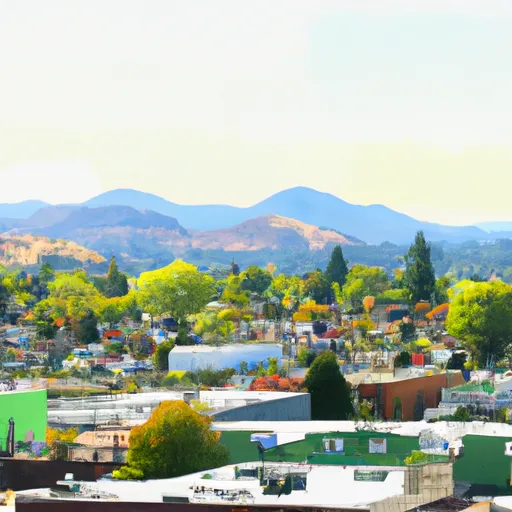-
 Snoflo Premium
Snoflo Premium
Get unlimited access to all our content
With no Ad interruptions! - Start Your Free Trial Login with existing account
Greenfield
Eden Index
Climate
8.9
•
Recreation
3.8
•
Community
1.9
•
Safeguard
5.4/10

Greenfield, California is a small agricultural town located in the Salinas Valley. The climate is mild with Mediterranean-like temperatures, ranging from mid 50s in the winter to mid-80s in the summer. The town is situated near the Salinas River, which provides water for irrigation and recreation. The hydrology constituents include nitrate, pesticide and pathogens from agricultural runoff, but the city has implemented measures to reduce their impact. Outdoor recreation opportunities include hiking, camping, and birdwatching at the nearby Pinnacles National Park, as well as fishing and boating at Lake San Antonio and Lake Nacimiento. The town is also home to several parks and sports fields for outdoor activities.
What is the Eden Index?
The Snoflo Eden Index serves as a comprehensive rating system for regions, evaluating their desirability through a holistic assessment of climate health, outdoor recreation opportunities, and natural disaster risk, acknowledging the profound impact of these factors on livability and well-being.
Climate Health Indicator (CHI): 8.9
Greenfield receives approximately
328mm of rain per year,
with humidity levels near 73%
and air temperatures averaging around
15°C.
Greenfield has a plant hardyness factor of
9, meaning
plants and agriculture in this region tend to thrive here all year round.
By considering the ideal temperature range, reliable water supplies, clean air, and stable seasonal rain or snowpacks, the Climate Health Indicator (CHI) underscores the significance of a healthy climate as the foundation for quality living.
A healthy climate is paramount for ensuring a high quality of life and livability in a region, fostering both physical well-being and environmental harmony. This can be characterized by ideal temperatures, reliable access to water supplies, clean air, and consistent seasonal rain or snowpacks.
Weather Forecast
Streamflow Conditions
Central California Coastal
Area Rivers
Central California Coastal
Snowpack Depths
Central California Coastal
Reservoir Storage Capacity
Central California Coastal
Groundwater Levels
Recreational Opportunity Index (ROI): 3.8
The Recreational Opportunity Index (ROI) recognizes the value of outdoor recreational options, such as parks, hiking trails, camping sites, and fishing spots, while acknowledging that climate plays a pivotal role in ensuring the comfort and consistency of these experiences.
Access to outdoor recreational opportunities, encompassing activities such as parks, hiking, camping, and fishing, is crucial for overall well-being, and the climate plays a pivotal role in enabling and enhancing these experiences, ensuring that individuals can engage in nature-based activities comfortably and consistently.
Camping Areas
| Campground | Campsites | Reservations | Toilets | Showers | Elevation |
|---|---|---|---|---|---|
| Kirk Creek | 33 | 154 ft | |||
| Plaskett Creek | 42 | 200 ft | |||
| San Lorenzo | None | 285 ft | |||
| Arroyo Seco | 40 | 914 ft | |||
| Fort Hunter Liggett Primitive Military | None | 947 ft | |||
| Escondido | 9 | 2,165 ft | |||
| Memorial Park | 8 | 2,089 ft | |||
| Nacimiento | 8 | 1,616 ft |
Nearby Ski Areas
Catastrophe Safeguard Index (CSI):
The Catastrophe Safeguard Index (CSI) recognizes that natural disaster risk, encompassing floods, fires, hurricanes, and tornadoes, can drastically affect safety and the overall appeal of an area.
The level of natural disaster risk in a region significantly affects safety and the overall livability, with climate change amplifying these risks by potentially increasing the frequency and intensity of events like floods, fires, hurricanes, and tornadoes, thereby posing substantial challenges to community resilience and well-being.
Community Resilience Indicator (CRI): 1.9
The Community Resilience Indicator (CRI) recognizes that education, healthcare, and socioeconomics are crucial to the well-being of a region. The CRI acknowledges the profound impact of these elements on residents' overall quality of life. By evaluating educational resources, healthcare accessibility, and economic inclusivity, the index captures the essential aspects that contribute to a thriving community, fostering resident satisfaction, equity, and social cohesion.

